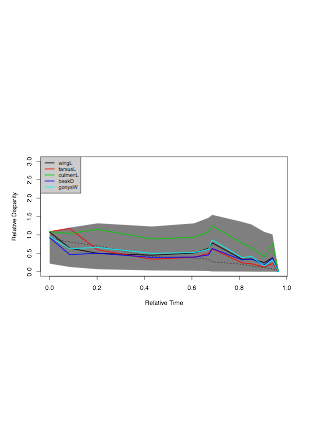Computer code


1. Disparity Through Time analysis
Code is freely available to run Disparity Through Time analyses that show high statistical power and avoid multiple testing issues. The methods are documented in Murrell (2018), and the code can be found in my github repository.
2. Moment Closure models
Below is a repository for code that has been used to generate results in various publications. All code is written and owned by David Murrell but is available here for those interested in getting to grips with moment closure methods in ecology. Please note that in most instances the code was not written for general use/release and therefore requires an investment of time to understand how it works.
Spatially-explicit Lotka-Volterra predator-prey dynamics. This software should be able to reproduce results in Murrell (2005) Local spatial structure and predator-prey dynamics: counterintuitive effects of prey enrichment. The American Naturalist, 166, 354-367. Please note this code was not written with a user friendly interface, but does contain comments to aid in understanding. All code is written in the C programming language and compiles in Unix C/C++ compilers.
Moment closure approximation:
Stochastic, individual-based model:
This code was also adapted and used in:
Barraquand, F. & Murrell, D. J. (2012) Intense or Spatially Heterogeneous Predation Can Select against Prey Dispersal. PLoS ONE 7(1): e28924. [Link]
Barraquand, F. & Murrell, D. J. (2012) Evolutionarily stable consumer home range size in relation to resource demography and consumer spatial organization. Theoretical Ecology, 5: 567-589. doi:10.1007/s12080-011-0148-7. [Link]